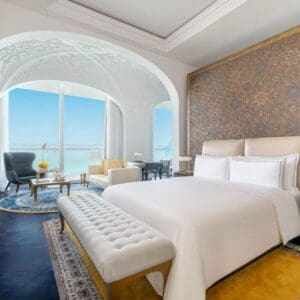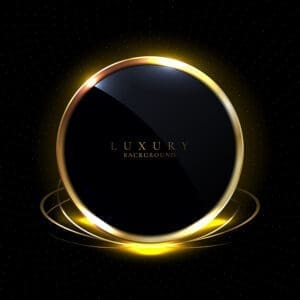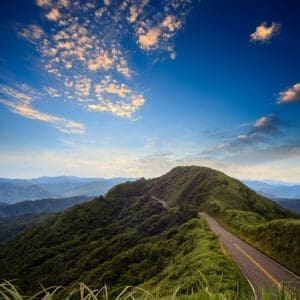 If food is our engines’ fuel, then coffee is the injector. Whether traveling for business or leisure, it’s a vital part of many adults’ mornings and a deeply personal experience.
If food is our engines’ fuel, then coffee is the injector. Whether traveling for business or leisure, it’s a vital part of many adults’ mornings and a deeply personal experience.
In today’s world where Starbucks and McCaf are considered the baseline for what’s tolerable, however, any hotel that wants to make an impression through its coffee service must be exceedingly vigilant to not only offer guests superior quality but also an extraordinarily diverse menu.
It requires both elements, though, as you cannot succeed on quality alone. As a truncated example of how this psychological principle works, suppose the nearest franchised coffeehouse provides a basic menu of drip coffee, americano, espresso and cappuccino, while you offer the exact same list. No matter the quality of the beans you source, how much more knowledgeable your barista is or how much better your machinery is, you are still competing on apples to apples. You are still comparing almost imperceptible changes in flavor while not presenting anything even slightly different.
Instead, you need to bring people slightly outside of their comfort zones by offering a few beverages and an assortment of snacks that aren’t what one typically finds nowadays at a caf. With so many options at your disposal, where do you start? How do you go about finding the right balance of exotic and traditional so you can wow patrons without alienating them?
My recommendation is that you look to rebrand your breakfast outlet or caf with a theme inspired by a specific geographic region. One negative consequence of the vast spread of franchised coffeehouses is that we’ve homogenized our coffee selection, which means that relishing in the nuances of a specific culture will automatically differentiate you from the competition.
Whether it’s France, Italy, Germany, Spain, Morocco, Turkey, Ethiopia, Mexico, Brazil or South Korea, every country has its own interpretation as to what makes its particular coffee culture unique. Some nations are even blessed by having a myriad of variations from district to district. And all can be wielded to better engage your customers towards crafting a superior dining experience.
For instance, suppose you decide to give your restaurant an Italian theme Ð let’s say Roman to be exact. Then instead of following the nomenclature that some bigwig in Seattle once decided was what you would call an americano, you opt to put this drink on the menu as a caff ristretto (restrained or narrow), caff corto (short) or, obvious enough, caff normale, all three as they would be labeled in any trattoria within sight of the Vatican. Just this simple change can work to build excitement, even without changing the actual beverage provided.
Now comes the fun part Ð deciding what you are going to be in broad strokes. Are you going to model your restaurant after an authentic Parisian patisserie where the smell of melted butter oozes through the corridors, a Catalonian caf with vibrant dcor to mirror the frenetic Barcelona nightlife or perhaps a wild little place like what you would find next to a bazaar in Istanbul? If you’ve decided to go the Italian bistro route, look to get licensed so you can offer guests a limited selection of caff corretto where your baristas can play around with infusions of grappa or other liqueurs.
The key throughout is that you can’t make gains by being just an imitator. Like a properly roasted brew, you too must be bold with whatever direction you decide to take your coffee service.
About the author
 One of the world’s most published writer in hospitality, Larry Mogelonsky is the principal ofÊHotel Mogel Consulting Limited, a Toronto-based consulting practice. His experience encompasses hotel properties around the world, both branded and independent, and ranging from luxury and boutique to select-service. Larry is also on several boards for companies focused on hotel technology. His work includes four books ÒAre You an Ostrich or a Llama?Ó (2012), ÒLlamas RuleÓ (2013), ÒHotel LlamaÓ (2015), and ÒThe Llama is InnÓ (2017). You can reach Larry atÊlarry@hotelmogel.comÊto discuss hotel business challenges or to book speaking engagements.
One of the world’s most published writer in hospitality, Larry Mogelonsky is the principal ofÊHotel Mogel Consulting Limited, a Toronto-based consulting practice. His experience encompasses hotel properties around the world, both branded and independent, and ranging from luxury and boutique to select-service. Larry is also on several boards for companies focused on hotel technology. His work includes four books ÒAre You an Ostrich or a Llama?Ó (2012), ÒLlamas RuleÓ (2013), ÒHotel LlamaÓ (2015), and ÒThe Llama is InnÓ (2017). You can reach Larry atÊlarry@hotelmogel.comÊto discuss hotel business challenges or to book speaking engagements.
This article may not be reproduced without the expressed permission of the author.



















